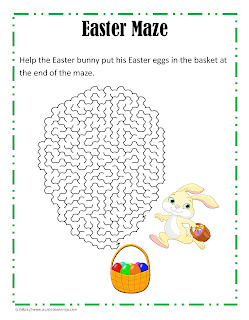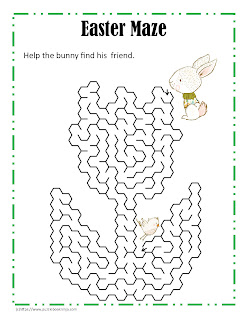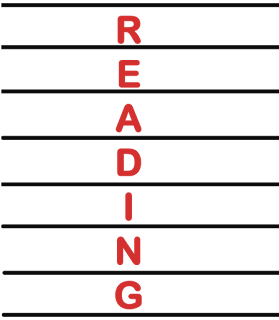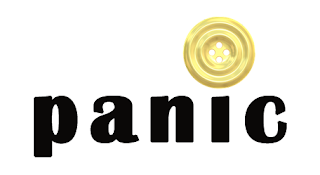Solving Puzzles Easily - Part 1
Answers to the Rebus puzzles from the previous blog post (How Many Puzzles Do You Know) can by found at the end of this post.
Are you puzzled by how to solve a puzzle? With the myriad of mind teasers available (not including jigsaw puzzles), different brain teaser puzzles require different strategies.
For example:
Are you puzzled by how to solve a puzzle? With the myriad of mind teasers available (not including jigsaw puzzles), different brain teaser puzzles require different strategies.
For example:
- Crossword puzzles usually require general knowledge, or in some cases, very specific knowledge (e.g. Educator crossword puzzles used to assess content knowledge);
- Cryptogram and cryptolist puzzles require knowledge of letter patterns, word patterns and theme words (cryptolists);
- Sudoku puzzles mostly use logical reasoning skills;
- Logic puzzles require understanding of sequencing, deductive and/or inductive reasoning skills;
- Picture puzzles requiring the puzzle solver to discover the differences require visual acuity to look for patterns within the picture.
Let's start by solving crossword puzzles!
How To Solve A Crossword Puzzle
This blog post focuses on solving crossword puzzles. Later posts will examine solving other puzzle types.
Some Basics
Crossword puzzles vary in complexity, publisher, print vs online, downloadable for print, and/or collections of crossword puzzles for purchase (found in most retail outlets, dollar stores, Walmart, corner stores).
At times you might feel like you are trying to learn another language, but with time and practice, you will become more familiar with the clue/answer patterns. And, you learn vocabulary along the way.
Here are some basics to help solve some of those crossword puzzles that you have been avoiding!
Use A Pencil - If solving the crossword puzzle on paper, then use a pencil. It's easier to change the answer, if you need to change your mind.
Stay With Same Publisher - Try sticking with the same publisher, or cruiciverbalist, at least in the beginning, because you tend to become familiar with the style and use of the favorite words (e.g. aerie, aglet, pawl) the more puzzles you complete.
Don't Always Start at the Top! - You don't always have to start in the upper left hand corner, at the number 1 blank box. Most often it's easier to answer clues for which you know the answer.
Fill-In-The-Blanks - Scan the Across and Down clues for 'fill-in-the-blank' clues. They are easy to spot in the list and a good place to get a firm start at solving the brain teaser.
3-, 4-, 5-letter Clues - Look for the 3-, 4- and 5- letter clues as a starting point to solve the crossword. This helps jump start other answers since some of the blanks will now be filled with letters from the shorter words. Keep in mind that you might not always see these words on a regular basis, but at the same time they are used frequently in multiple puzzles by the puzzle maker. Check out Crosswordese site for more information.
Look For A Theme - Review the clues to see if there is a theme that runs through the puzzle.
Clues and Answers Have the Same Form- Be aware of word structure and verb tense when solving for clues. For example: if the clue is a verb, then the answer will be a verb; if the clue has an abbreviation, then the answer will be an abbreviation; if the clue is plural, then the answer will be plural (so, add an 's' at the end of the word).
Questions Marks - Watch for question marks! It often means that the answer is not what you first think of. For example: Flower? (ANS might be river, stream, drain (water flows, so it is a flow-er).
Multiple Words - Answer might have more than one word in the answer. For example: clue might be everyone, and the answer could be et al.
Here are some basics to help solve some of those crossword puzzles that you have been avoiding!
Use A Pencil - If solving the crossword puzzle on paper, then use a pencil. It's easier to change the answer, if you need to change your mind.
Stay With Same Publisher - Try sticking with the same publisher, or cruiciverbalist, at least in the beginning, because you tend to become familiar with the style and use of the favorite words (e.g. aerie, aglet, pawl) the more puzzles you complete.
Don't Always Start at the Top! - You don't always have to start in the upper left hand corner, at the number 1 blank box. Most often it's easier to answer clues for which you know the answer.
Fill-In-The-Blanks - Scan the Across and Down clues for 'fill-in-the-blank' clues. They are easy to spot in the list and a good place to get a firm start at solving the brain teaser.
3-, 4-, 5-letter Clues - Look for the 3-, 4- and 5- letter clues as a starting point to solve the crossword. This helps jump start other answers since some of the blanks will now be filled with letters from the shorter words. Keep in mind that you might not always see these words on a regular basis, but at the same time they are used frequently in multiple puzzles by the puzzle maker. Check out Crosswordese site for more information.
Look For A Theme - Review the clues to see if there is a theme that runs through the puzzle.
Clues and Answers Have the Same Form- Be aware of word structure and verb tense when solving for clues. For example: if the clue is a verb, then the answer will be a verb; if the clue has an abbreviation, then the answer will be an abbreviation; if the clue is plural, then the answer will be plural (so, add an 's' at the end of the word).
Questions Marks - Watch for question marks! It often means that the answer is not what you first think of. For example: Flower? (ANS might be river, stream, drain (water flows, so it is a flow-er).
Multiple Words - Answer might have more than one word in the answer. For example: clue might be everyone, and the answer could be et al.
Answers to Puzzles in 'How Many Puzzles Do You Know' Post?
1. Reading between the lines
2. Panic button.
3. Strong undertow.
Next Steps
A next step for you, our readers, might be to start solving crossword puzzles using some of the above suggestions. If you already use most of them, then try a more challenging puzzle.
A next step for us is to continue to explore how to easily solve puzzles of other varieties.
Next Planned Blog Post
Riddles vs Puzzles
Question
What strategies to you use to help solve puzzles?
Feel free to share your comments below.
Cheers,
Liz

















